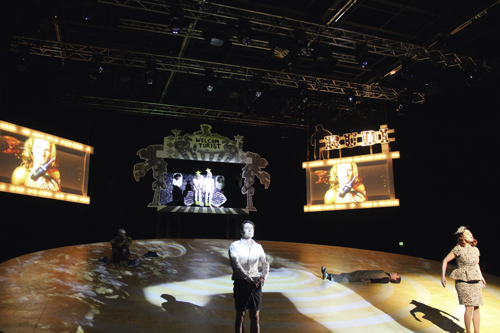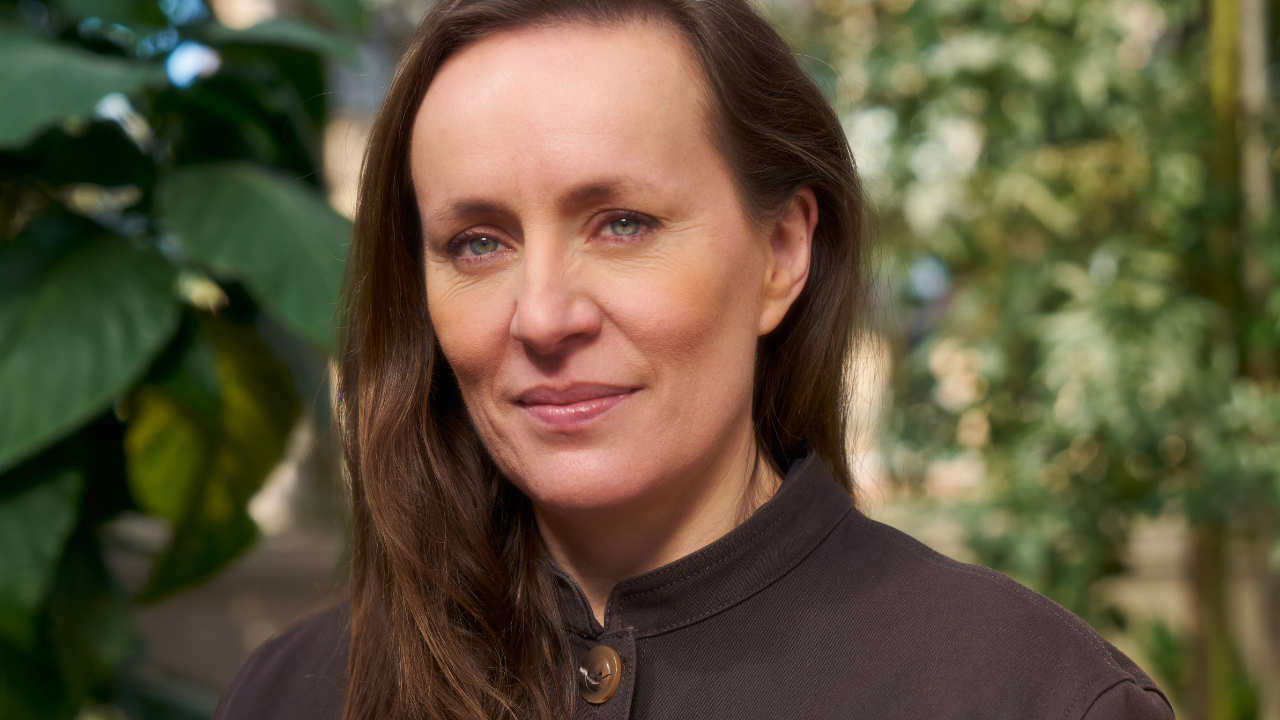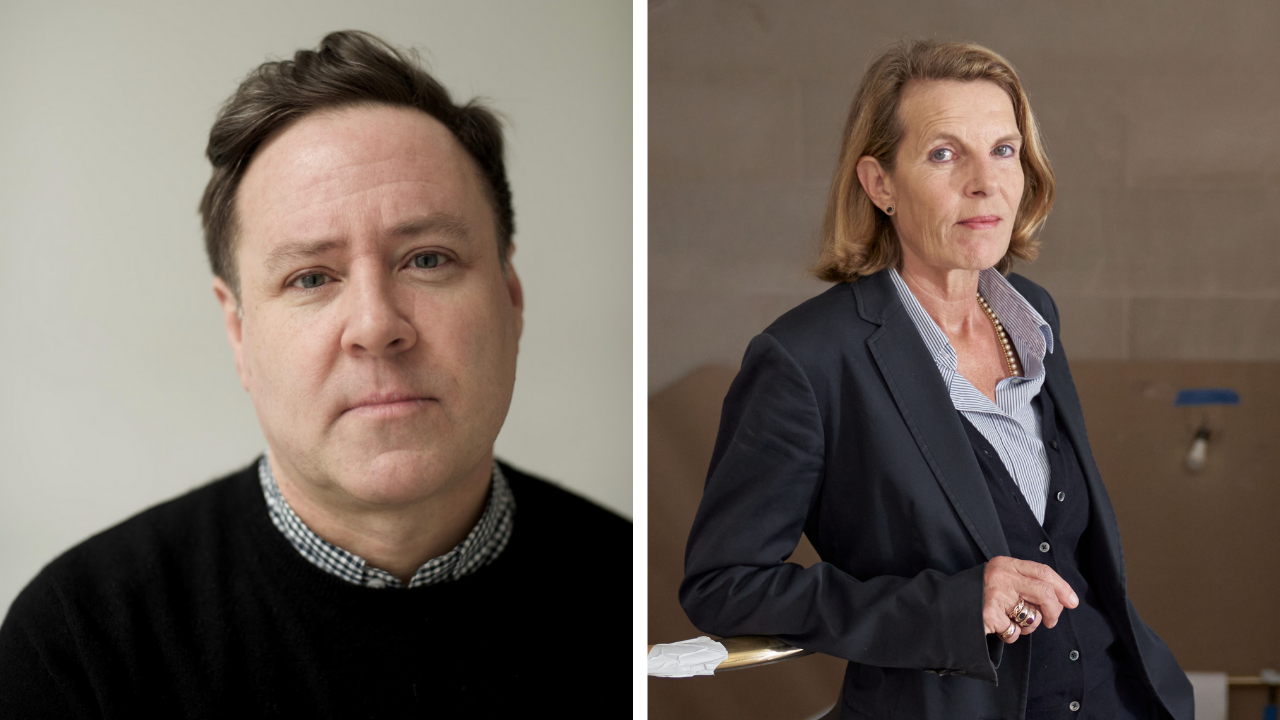Scene Together
In this series, frieze d/e asks artists to discuss their affinities to another person’s work. Here, Sibylle Berg shares her enthusiasm for the Finnish video artist Heta Multanen
In this series, frieze d/e asks artists to discuss their affinities to another person’s work. Here, Sibylle Berg shares her enthusiasm for the Finnish video artist Heta Multanen

Jan Kedves Who is Heta Multanen and why the affinity with her work?
Sibylle Berg I think Heta is an all-round genius. She can make films, understands technology, speaks several languages so well that she can manage the most complex books on art theory or nuclear physics, she’s absurdly foolish, she does cross-country skiing. She’s everything I would like to be. Heta is out of the ordinary.
How long have you known each other?
SB I met Heta nearly 12 years ago when I was producing a musical in Zurich, at that point working only as writer. Heta didn’t speak German so well, and my English wasn’t so great, and apart from her very funny film I didn’t remember much about her. Although we both live in the small town of Zurich, we didn’t often meet. Then this year, when I was co-directing an opera type of thing of mine in Stuttgart for the first time, I brought Heta on board. Before we set off for Stuttgart, we met up and it was like taking a wonderful drug. She understood the wildest nonsense that I thought up, picking it up and finished it off. To whom else could you tell something like: ‘what I imagine here is a lizard pie’ – and the other person nods and starts painting a lizard pie.
In your piece in Stuttgart, Angst reist mit (Travels With Fear), a number of European tourists are taken hostage by zombies. The set is a huge, sloping, rotating disc. Is that the lizard pie?
SB No, our basic idea was an animation machine, the kind they used early on in Hollywood before the blessing of animation as we know it today. But as so often happens in theatre, not much of the original idea was left over. The lizard pie was just an example of how I sometimes have weird ideas in my head and how, amazingly, Heta always understands them immediately.
In an interview on the Schauspiel Stuttgart website, Multanen says: ‘For a video artist, Sibylle Berg is a great writer to work with because her texts open up such broad scope for one’s personal associations.’ Have there ever been associations that you were unhappy about?
SB No, in Angst reist mit I always had complete trust in the contents of Heta’s head. Her imagination is beyond me. I was there for every single shoot and I found everything so utterly unobvious that I had to assume it was marvellous. As a non-expert in the visual field, anything I might think up necessarily already exists. So when someone manages to work outside of my imagination, my response is deep respect. On that basis, I was happy with all of Heta’s interpretations, even if and precisely because I found so many of them so profoundly disturbing.

How would you describe Multanen’s signature style? What is constant in her work?
SB Tonnes of cryptic humour. And total surprises. I don’t know a single person whose mind can compare to Heta’s. She’s completely fearless, perhaps as a result of her youth in the forests of Finland – bears, you know the deal.
Multanen seems to prefer a black-and-white colour scheme for her videos, and she often seems to make them look artificially old using effects like interference, snow or flickering. As she herself says: ‘Just because we can now generate brilliant colours and super-sharp images doesn’t mean I always have to want that, just because it’s possible.’ Are you familiar with similar thoughts from your practice as a writer?
SB I don’t know if it’s really true, but I also don’t do many things that I could actually do. I avoid displays of erudition. With my first published book, Ein paar Leute suchen das Glück und lachen sich tot [A few people seek happiness and laugh themselves to death, 1997] I tried to find a form that stuck to the bare essentials. I hate useless descriptions of landscapes, figures, characters. I could probably do it – but why would I? I find it just as uninteresting as the whole business of long-winded character development in plays. In my own way, I suppose I do try to describe conditions, make statements, communicate positions, without crazy descriptions of psychological qualities and back stories. Now I’m starting to talk like a gallerist explaining art!

Back to Multanen: working as a video artist in the theatre is often a thankless task. Even if the artist’s work plays a central part in the production, the credit will usually be given to the director, writer and actors.
SB In Stuttgart, Heta not only made the videos, but also the set, the stage space, so that – along with the music by Sven Helbig – she was responsible for the most important part of the play’s atmosphere. This exaggerated division between the directing and the visual input should be dispensed with. For me, the levels of visual setting, music, acting and script are absolutely equal in value. For a book or a theatre play, I’m actually more likely to start from a picture that conveys a mood or attitude. After our project in Stuttgart, Heta and I founded a directing collective. We’re calling ourselves Berg & Förster [Mountain & Forester].
What plans do you have as a collective?
SB Now that both of us have been working in the theatre for more than ten years – Heta in her field, me as a writer sitting in on rehearsals – we plan to do it ourselves. Plays with foresters and lizard pies without the dramaturgical demand for the holy body of the text. We work well together, we don’t shout at each other, and we have a third woman in the team, Nele Lindemann, who will embody the mighty intellect, and who will then be able to underpin questions about the content of our work with generous helpings of theory. But seriously: seeing something on stage that I imagined when I was writing is a dream. All I can say about it in terms of theory is what every director or collective would say: ingrained viewing habits, blah blah blah. In two follow-up projects, I want to find out whether theatre can do what I like. And now you might ask: So, Sibylle Berg, what do you like? And I would say: I started writing for the theatre because of Alain Platel.

In Multanen’s video at the end of Angst reist mit, the tourists, and thus the whole of humanity, are not only sent to their deaths with a cheery farewell, but a ‘Cheerio!’ in Finnish – ‘Näkemiin!’ – surely a sign of the close cooperation between the two of you. Are you learning Finnish?
SB I approach everything Nordic with a huge, totally racist love. I’m not a brilliant speaker of Finnish or any other foreign language, and I’m too lazy to learn anything because if I’m ever not working then I prefer to stare at a wall, or a Finnish forest. With Heta’s Finnish cheerio, we were hoping that Finns would come by the coach-load to see our play.
Translated by Nicholas Grindell
Sibylle Berg is a writer, columnist and director. Her latest novel Vielen Dank für das Leben (Many Thanks For Life) was published in 2012. Her play Angst reist mit (Travels With Fear) is currently showing at Schauspiel Stuttgart. She lives in Zurich.
Heta Multanen is a video artist and photographer. She has worked with theatres including Staatsoper Berlin, Schauspielhaus Zürich, Berlin’s Volksbühne and Vienna’s Burgtheater. She lives in Zurich.






















